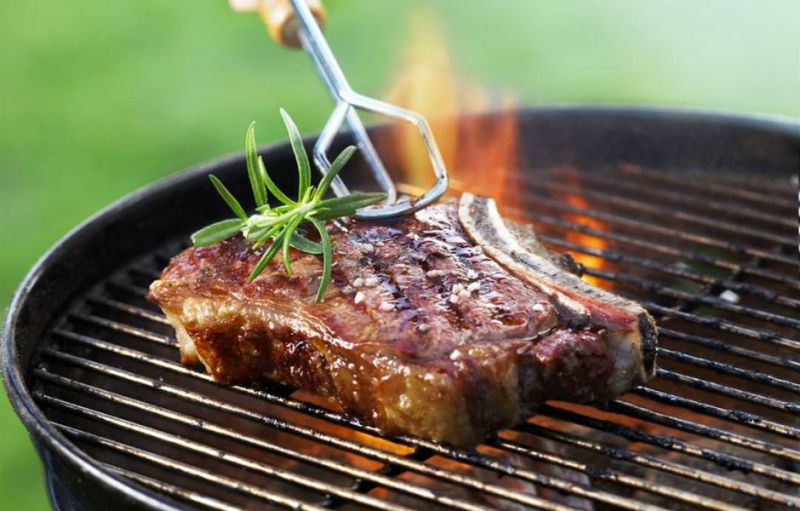
Fat is delicious: Buy a 10 oz. strip steak or rib eye- both have a nice fat cap (look for one at least 1/4” thick) surrounding the steak, which will protect the muscle from drying out and toughening up when you expose it to high heat.
Use high heat: Cranking up the heat helps steaks adopt a steakhouse-worthy crust. The problem is that the average cheap saute pan can’t take the heat. So break out a heavy-bottomed metal pan or cast iron skillet.
Don’t play with your meat!: When you place the steak on a hot grill or pan, leave the steak alone until you begin to see a crust forming on the side of the steak that’s in contact with the skillet, around 3 to 4 minutes.
Baste your steak: Add a few springs of thyme and a few unpeeled garlic cloves to the oil in a pan. Baste the steak by tipping the pan and using a spoon to pour the seasoned oil over the steak.
Let it rest: Remove the meat from the pan and allow it to sit for 10 minutes before slicing across the grain so that the juices redistribute inside the steak. Slice and sprinkle with additional sea salt. Serve.
Season with fat: All animals should be cooked and seasoned with their own fat. When we cook steak we use our MOP which is dry-aged beef fat that’s been rendered and cooked with butter, thyme, rosemary and garlic.
Editors' Recommendations
- The 9 best lesser-known cuts of beef for grilling anytime – flank, tri-tip, and more
- How To Grill Shrimp, According To the Wild American Shrimp Chef of the Year
- Pellet Grilling 101: What It Is, Why It’s Awesome, and Tips from the Pros


